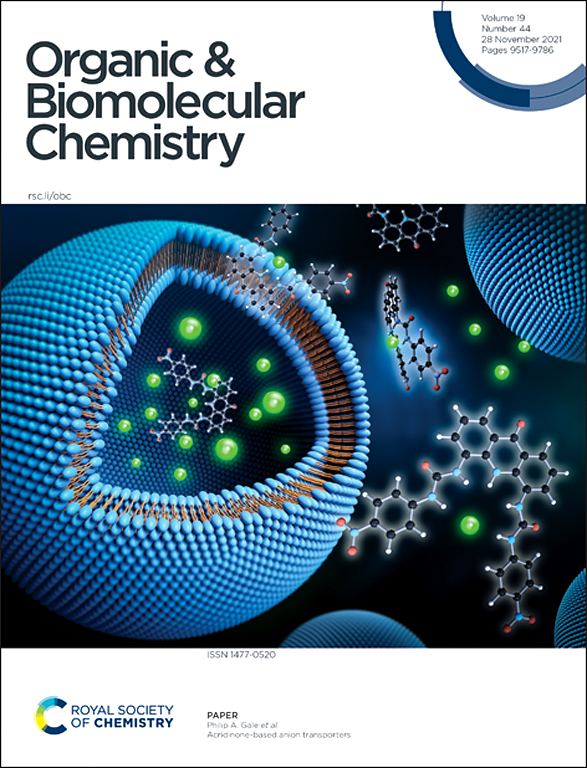具有五烯并[1,2-b:4,5-b']二芴核心的扩展四硫杂戊烯--一种供体-受体多重氧化还原系统。
IF 2.7
3区 化学
Q1 CHEMISTRY, ORGANIC
引用次数: 0
摘要
通过引入大的五烯并[1,2-b:4,5-b']二芴作为中心多环芳烃分子,制备出了一种新型的扩展四硫富戊烯。该化合物是一个多氧化还原体系,可以可逆地呈现六种氧化还原状态(-1、0、+1、+2、+3、+4)。该化合物在可见光区域表现出很强的吸收能力,其末端吸收几乎达到 700 纳米。本文章由计算机程序翻译,如有差异,请以英文原文为准。
![Extended tetrathiafulvalene with a pentaleno[1,2-b:4,5-b′]difluorene core – a donor–acceptor multi-redox system†](https://img.booksci.cn/booksciimg/2024-11/99295848951763432919.jpg)
Extended tetrathiafulvalene with a pentaleno[1,2-b:4,5-b′]difluorene core – a donor–acceptor multi-redox system†
A novel extended tetrathiafulvalene was prepared by introducing the large pentaleno[1,2-b:4,5-b′]difluorene as a central polycyclic aromatic hydrocarbon moiety. This compound behaved as a multi-redox system that could take reversibly six redox states (−1, 0, +1, +2, +3, +4). The compound exhibited strong absorptions in the visible region with an end-absorption almost reaching to 700 nm.
求助全文
通过发布文献求助,成功后即可免费获取论文全文。
去求助
来源期刊

Organic & Biomolecular Chemistry
化学-有机化学
CiteScore
5.50
自引率
9.40%
发文量
1056
审稿时长
1.3 months
期刊介绍:
Organic & Biomolecular Chemistry is an international journal using integrated research in chemistry-organic chemistry. Founded in 2003 by the Royal Society of Chemistry, the journal is published in Semimonthly issues and has been indexed by SCIE, a leading international database. The journal focuses on the key research and cutting-edge progress in the field of chemistry-organic chemistry, publishes and reports the research results in this field in a timely manner, and is committed to becoming a window and platform for rapid academic exchanges among peers in this field. The journal's impact factor in 2023 is 2.9, and its CiteScore is 5.5.
 求助内容:
求助内容: 应助结果提醒方式:
应助结果提醒方式:


